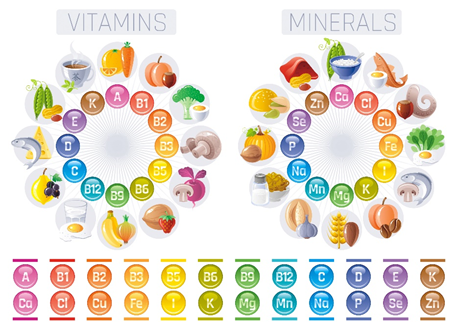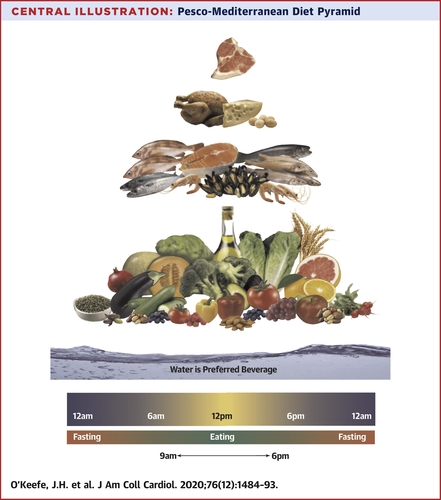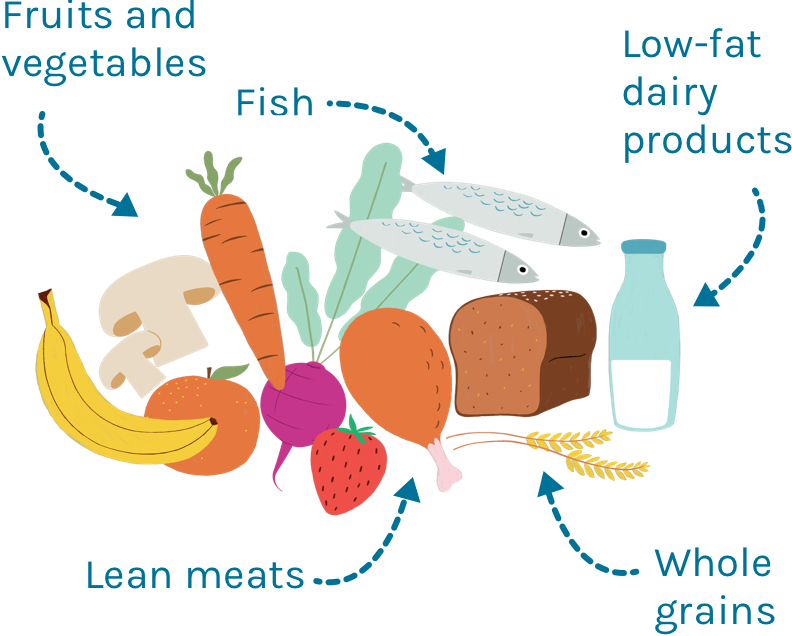
Mediterranean diets are lifestyle changes that help you lose weight and keep your heart healthy. It includes more than a dozen heart-healthy ingredients, which will help you live longer and more healthy lives. These foods are high in calories but they're among the most healthy on the planet. The best part? You can eat as much of this diet as you like, just make sure you are eating in the right amounts.
A Mediterranean diet is based on the idea that eating a diverse variety of foods is the best way to prevent heart disease. This diet is rich in fruits and vegetables as well as healthy fats. Red wine and poultry are still allowed. This diet encourages the consumption of whole, nutritious foods as well as limiting processed, added sugars, and sodium. It promotes healthy eating habits as well as a healthy lifestyle.

Although the Mediterranean diet includes very little red meat, it does include small amounts of eggs and nuts. These foods are known to lower the risk for heart disease by about 30% according to research. You also have a reduced chance of developing dementia, stroke, or heart attack through the Mediterranean diet. The Mediterranean diet review also reveals many other benefits. You can also make a change in your life by including more of these foods.
According to the American Heart Association, a review of Mediterranean diets shows many benefits for your health. It can lower your risk of hypertension or ischemic heart diseases, and it's especially beneficial for those with diabetes. But, not everyone can benefit from the Mediterranean diet. Women should consume no more than one 5-ounce glass of wine per day. Men should consume up to two glasses. The Mediterranean diet has moderate dairy intake. It is a high fiber diet with plenty of nutrients and fiber.
The Mediterranean diet has another benefit: it is high in fiber. Compared to refined flour, wholegrains are more filling and more nutritious than white bread. While a Mediterranean diet is low in fat, it is high in monounsaturated fats. This makes it less likely that it will cause heart disease. It is also lower in saturated fat and trans fat. In addition, a Mediterranean diet is rich in antioxidants.

Antioxidants are another important part of the Mediterranean diet. Studies have shown that it lowers the likelihood of Alzheimer's disease, stroke and dementia. Its antioxidants help to fight off harmful free radicals. The body can be protected from free radical damage through antioxidants in the Mediterranean Diet. These antioxidants have been linked to lower rates of certain types and cancers, as well as a reduced risk of developing cardiovascular disease. This Mediterranean diet review will show you how to make the most of your Mediterranean diet for diabetics.
FAQ
What are the ten best foods to eat in America?
These are the 10 best foods you can eat:
-
Avocados
-
Berries
-
Broccoli
-
Cauliflower
-
Eggs
-
Fish
-
Grains
-
Nuts
-
Oats
-
Salmon
What is the problem of BMI?
BMI stands for Body Mass Index, which is a measurement of body fat based on height and weight. The following formula can be used to calculate BMI.
Weight in kilograms divided with height in meters.
The result is expressed in a number between 0 - 25. A score of 18.5 or higher indicates overweight, while a score of 23 or higher indicates obesity.
A person of 100 kg with a height of 1.75m will have 22 BMI.
What is the working principle of an antibiotic?
Antibiotics kill harmful bacteria. Antibiotics can be used to treat bacterial infection. There are many options for antibiotics. Some are administered topically, while others can be taken orally.
Many people who have been exposed can be prescribed antibiotics. For example, if someone has had chicken pox, he or she might take an oral antibiotic to prevent shingles later on. A penicillin injection might be given to prevent pneumonia in someone who has had strep.
Doctors should prescribe antibiotics to children. Children are more susceptible to side effects from antibiotics than adults.
Diarrhea is one of the most common side effects of antibiotics. Other side effects possible include dizziness, nausea, vomiting, stomach cramps, dizziness and allergic reactions. These symptoms generally disappear once the treatment has finished.
Do I need to count calories?
It is possible to wonder "What diet is best for me?" or "is counting calories necessary?" The answer is dependent on several factors like your current health status, personal goals, your lifestyle, and your preferences.
The Best Diet for Me - Which One is Right For You?
The best diet depends on me, my health, my goals, my preferences and my overall lifestyle. There are many diets out there, some good and some bad. Some diets work for some people, while others are not. What should I do then? How can I make the right choice?
This article aims at answering these questions. It begins with an overview of the different diets today. After that, you will learn about the pros and disadvantages of each type. Finally, we'll look into how to choose the best one for you.
Let's first take a look at different diets.
Diet Types
There are three main types of diets: low fat, high protein, and ketogenic. Let's briefly discuss them below.
Low Fat Diets
A low fat diet is a diet that restricts the amount of fats consumed. This is achieved by reducing saturated fats like butter, cream cheese, and other dairy products. These fats can be replaced with unsaturated fats like avocados and olive oil. A low fat diet is often recommended for those who want to lose weight quickly and easily. This kind of diet could cause problems like constipation or heartburn and indigestion. A person may also experience vitamin deficiencies if they don't get enough vitamins.
High Protein Diets
High protein diets discourage carbohydrates and encourage the use of proteins. These diets are more protein-rich than others. These diets can help increase muscle mass and decrease calories. The downside is that they may not provide adequate nutrition for someone who needs to eat regularly. They are also very restrictive, so they might not be appropriate for everyone.
Ketogenic Diets
Ketogenic diets can also be known as keto diets. They are high-fat and low in carbs and protein. They are commonly used by athletes and bodybuilders, as they allow them train harder and more frequently without getting tired. To avoid side effects such as fatigue, nausea, headaches, or other unpleasant side effects, you must strictly adhere to their instructions.
Why is it important to live a healthy life?
A healthy lifestyle will help us live longer and happier lives. Healthy eating habits, regular exercise, healthy sleep habits, stress management, and good sleep habits can help to prevent heart disease, stroke, diabetes, cancer, and other serious diseases.
A healthy lifestyle can also help improve mental health and make it easier to deal with daily stressors. A healthy lifestyle can also help you feel and look younger.
How often should I exercise
Fitness is key to a healthy lifestyle. But, you don't need to spend a specific amount of time exercising. Find something you like and stay with it.
If you are working out three times a weeks, aim to do 20-30 minute of moderate intensity. Moderate intensity is when you still have to breathe hard after the workout. This type of workout burns around 300 calories.
You can walk for 10 minutes every day if that is what you prefer. Walking is low-impact and easy on the joints.
If you'd rather run, try jogging for 15 minutes three times a week. Running is an excellent way to lose weight and tone your muscles.
You should start slowly if it's your first time exercising. Start with just 5 minutes of cardio a few times a week. Gradually increase your cardio time until you reach the goal.
Statistics
- Extra virgin olive oil may benefit heart health, as people who consume it have a lower risk for dying from heart attacks and strokes according to some evidence (57Trusted Source (healthline.com)
- WHO recommends reducing saturated fats to less than 10% of total energy intake; reducing trans-fats to less than 1% of total energy intake; and replacing both saturated fats and trans-fats to unsaturated fats. (who.int)
- According to the Physical Activity Guidelines for Americans, we should strive for at least 150 minutes of moderate intensity activity each week (54Trusted Source Smoking, harmful use of drugs, and alcohol abuse can all seriously negatively affect your health. (healthline.com)
- WHO recommends consuming less than 5% of total energy intake for additional health benefits. (who.int)
External Links
How To
What does the "vitamins” word mean?
Vitamins are organic substances found naturally in food. Vitamins are essential for our bodies to absorb nutrients from the foods we eat. Vitamins cannot be produced by the body. They must be acquired from food.
There are two types of vitamins: water soluble and fat soluble. Water-soluble vitamins dissolve quickly in water. These include vitamin C (thiamine), Vitamin B1 (riboflavin), Vitamin B2 (riboflavin), Vitamin B3 (niacin), Vitamin B6 (pyridoxine), Vitamin C, B1 (thiamine), Vitamin B2 (riboflavin), Vitamin B3 (niacin), and Vitamin B6 (pyridoxine). The liver and fatty tissues are home to fat-soluble vitamins. Some examples include vitamin D and E, K, A and beta carotene.
Vitamins are classified based on their biological activity. There are eight main groups of vitamins.
-
A – Essential for normal growth, and the maintenance of good health.
-
C - important for proper nerve function and energy production.
-
D – Essential for healthy teeth, bones and joints
-
E - Required for good vision & reproduction
-
K - Essential for healthy muscles and nerves.
-
P - essential for strong bones, teeth and tendons
-
Q - Aids digestion and iron absorption
-
R - necessary for making red blood cells.
The recommended daily allowance for vitamins (RDA) varies based on gender, age, and physical conditions. The U.S. Food and Drug Administration sets RDA values.
For example, the RDA for vitamin A is 400 micrograms per dayfor adults 19 years or older. Because it is essential for the development of the fetus, pregnant women should consume 600 micrograms per daily. Children ages 1-8 require 900 micrograms per day. Infants below one year old require 700mg per day. But, between 9 months to 12 months, the amount drops to 500mg per day.
Children between the ages 1--18 years old who are overweight or obese require 800 micrograms per Day, while those who are overweight or obese need 1000 micrograms. To meet their nutritional needs, children underweight and obese require 1200 micrograms a day.
Children ages 4-8 years who have been diagnosed with anemia need 2200 micrograms per day of vitamin C.
2000 micrograms per person is necessary for general health. Women who are pregnant or breastfeeding need 3000 micrograms per day due to increased nutrient requirements.
Adults over 70 years of age need 1500 micrograms per day since they lose about 10% of their muscle mass each decade.
Women who have been pregnant or are lactating require more than the RDA. Pregnant women need 4000 micrograms per dayduring pregnancy and 2500 micrograms per day after delivery. Breastfeeding moms need 5000 micrograms each day when breastmilk production occurs.